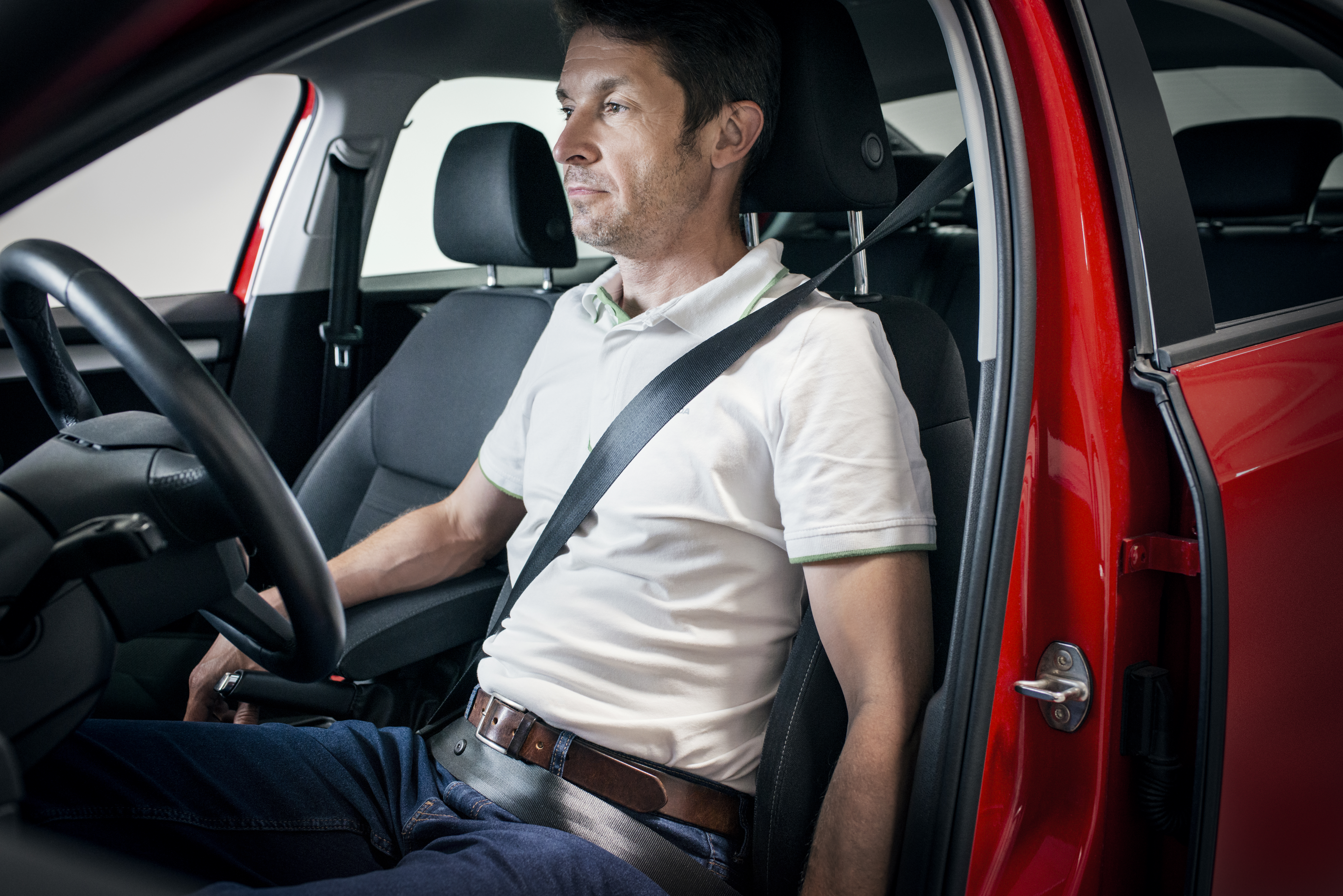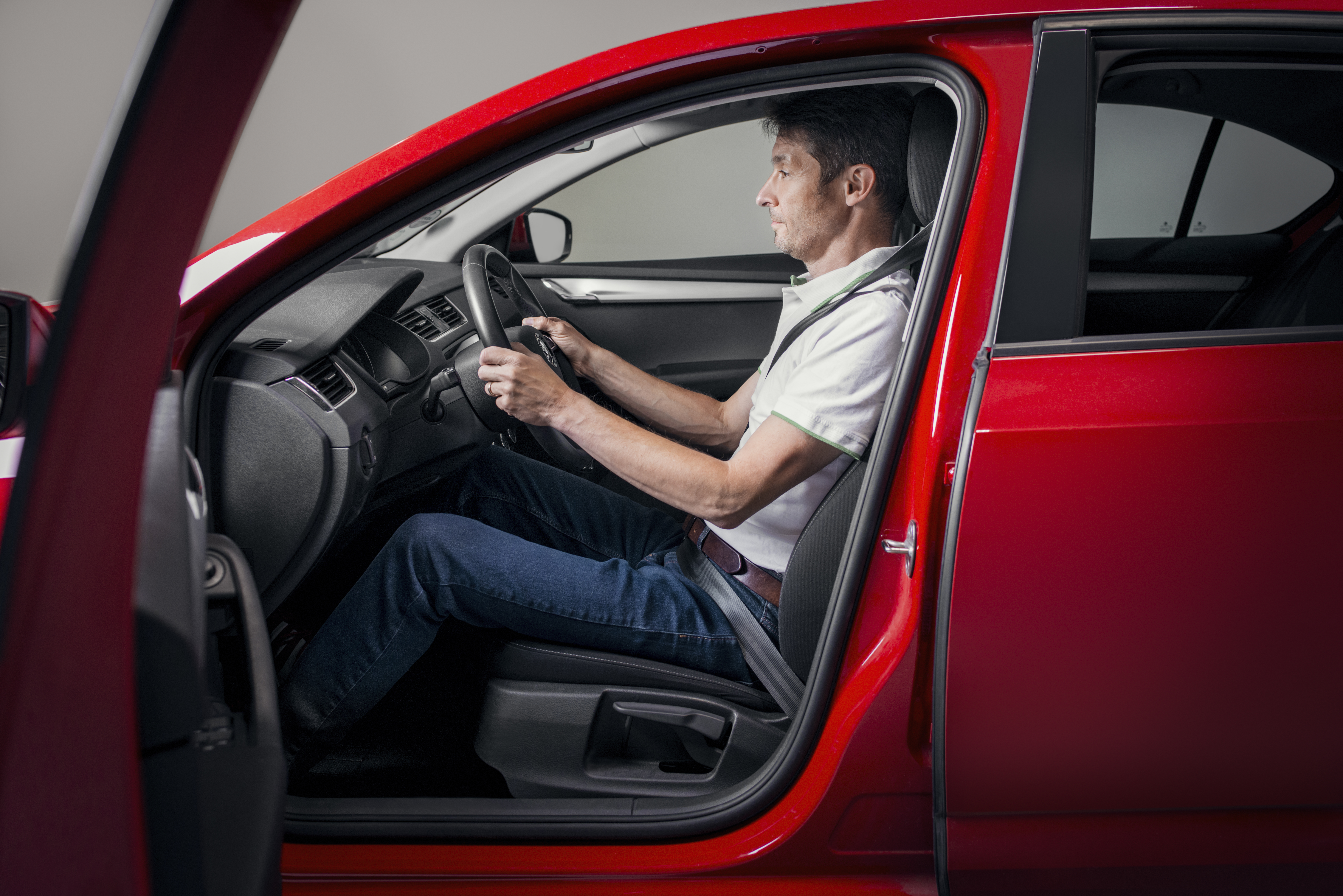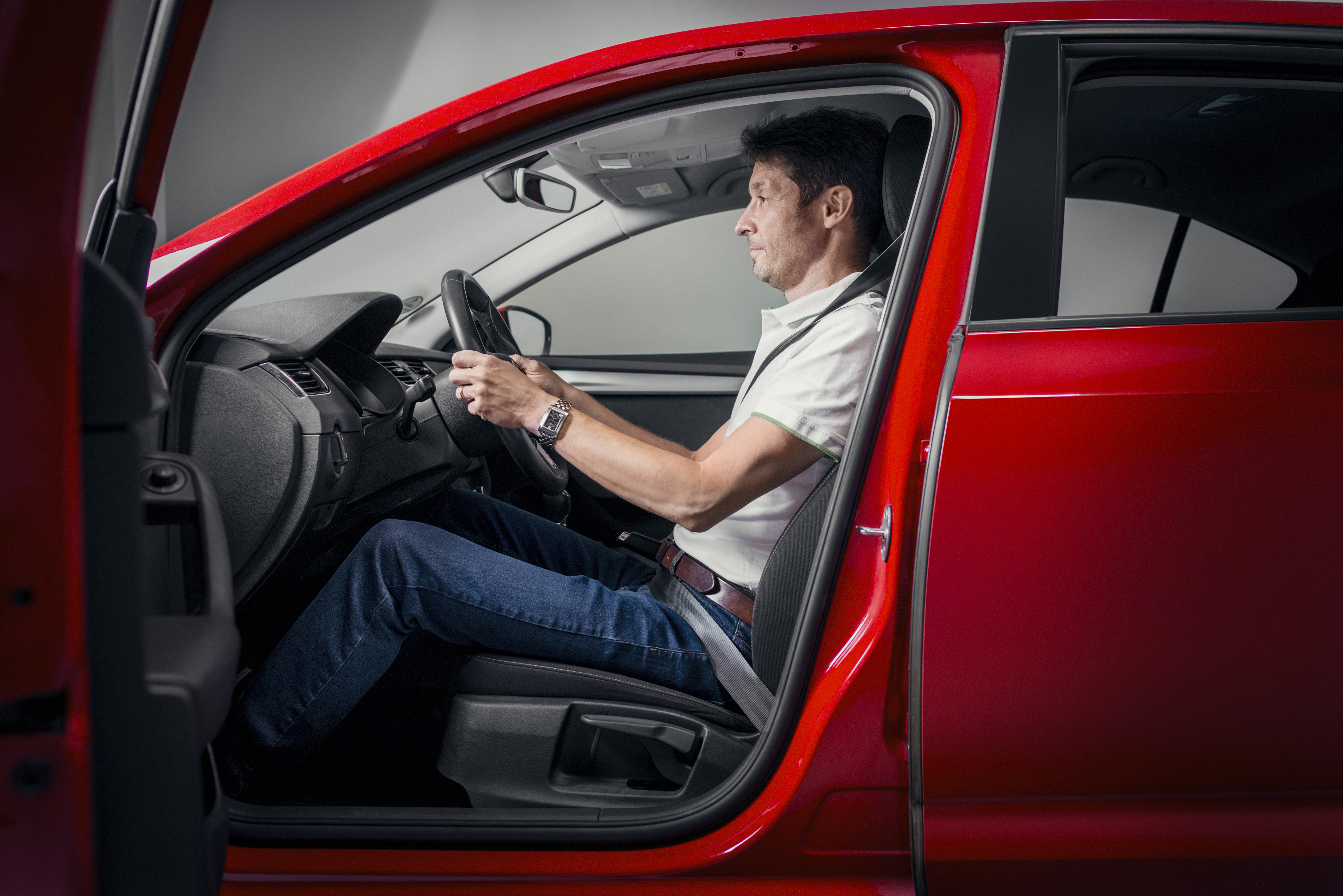Neither near nor far
There are three reasons why you shouldn’t be “lying down”. In addition to having a good view and the aforesaid control of the car, this is also because a seat belt can’t hold you in place if there is a gap between your body and the belt – the body tends to slip underneath. “There’s even a technical term for it – submarining – when the body shoots forward beneath the seat belt, which then catches around the neck, resulting in strangulation,” adds the expert.
 The correct way to put on a seat belt to prevent “submarining” – the belt rests on the shoulder and crosses the pelvis, not the belly, and the driver sits upright.
The correct way to put on a seat belt to prevent “submarining” – the belt rests on the shoulder and crosses the pelvis, not the belly, and the driver sits upright.
He also has a basic rule for longitudinal seat adjustments: the legs must never be fully extended, even with the pedal fully depressed all the way to the floor. They must always remain at least slightly bent – otherwise the bones in the joints will be forced up through the body like on a telescopic umbrella.
 Your legs should remain slightly bent.
Your legs should remain slightly bent.
Similar considerations should be made with regard to the steering wheel. Again, don't allow your arms to become locked at the joints. The correct way to hold the steering wheel is with your hands in the “quarter to three” position. This grip allows a much wider range of manoeuvres. Today’s steering wheels make this easier by their shape – they are recessed in the right places and also widened to support the palm of the hand. This is also for safety if the airbag is activated: the bag forces the hands into the free space at the sides.
 Holding the steering wheel in the “9 and 3” position gives your hands the maximum freedom for manoeuvring.
Holding the steering wheel in the “9 and 3” position gives your hands the maximum freedom for manoeuvring.
It is equally important not to be too close to the steering wheel, and thus also the airbag, though. The ideal position has to do with the timing of the airbags; they must not make contact with the body when they are filling, or at the point of maximum hardness, but at the precise moment when they start to deflate.
 The ideal distance: with your arms outstretched, your wrists rest on top of the steering wheel.
The ideal distance: with your arms outstretched, your wrists rest on top of the steering wheel.
Robert Šťastný also offers a recipe for the ideal seat-to-steering-wheel distance: with your back and both shoulder blades resting comfortably on the backrest, hold your outstretched arm in front of you – your wrist should rest on the top of the steering wheel rim. Then, when you grip the steering wheel in the said “9 and 3” position, your arms are bent at the elbows. “At the same time, you need to remember to keep your legs sufficiently bent – it’s always a compromise, as everyone’s body and limb proportions are different,” adds Šťastný, adding that a good guide is to see how the crash test dummies are seated.





























